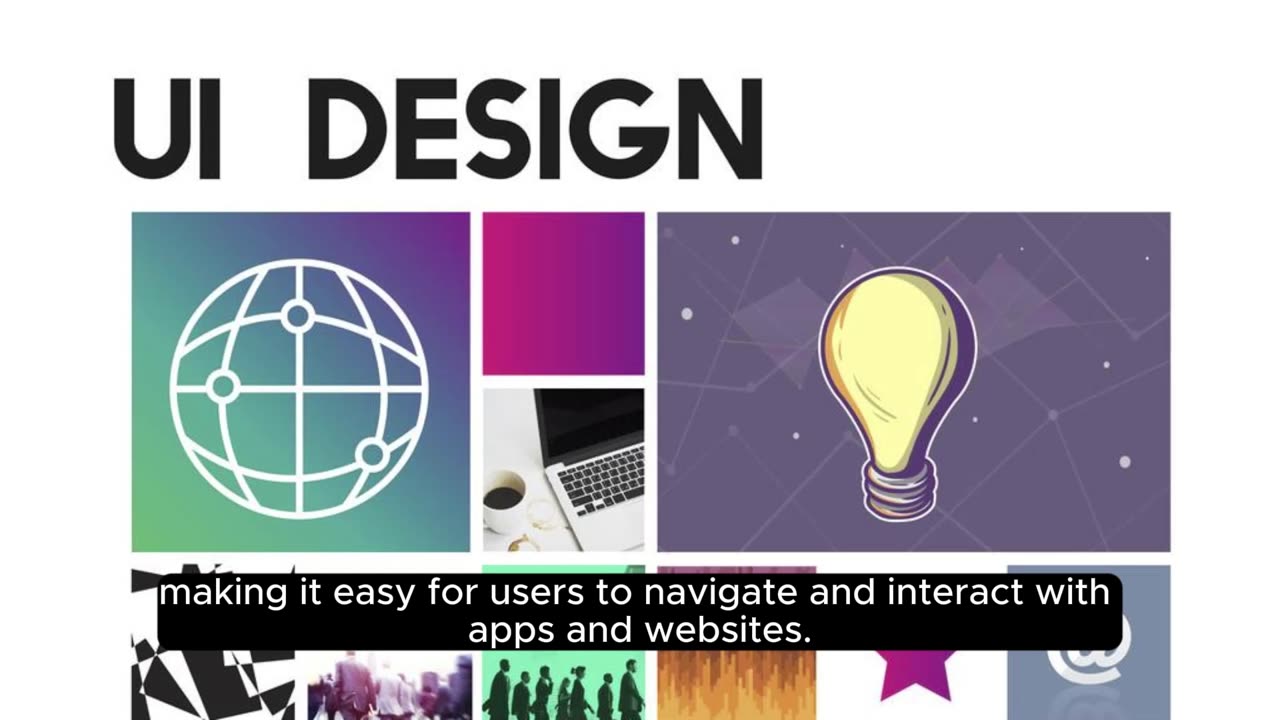Premium Only Content

Flat Design and Material Design_ Explaining Curren
"Flat Design and Material Design: Explaining Current Design Trends"
In the dynamic world of graphic and user interface design, two prominent styles have emerged as key players—Flat Design and Material Design. These design trends have significantly influenced the visual aesthetics of digital interfaces, shaping the way users interact with websites, applications, and digital content.
**Flat Design:**
Flat Design is characterized by its simplicity, minimalism, and two-dimensional appearance. It eschews the use of embellishments like shadows, gradients, and textures, opting for a clean and straightforward visual language. Flat Design emphasizes clarity and ease of use, with a focus on bold colors, sharp edges, and iconography. This design approach gained popularity for its ability to create visually appealing layouts that load quickly and provide a seamless user experience.
**Material Design:**
On the other hand, Material Design, introduced by Google, is a design language that combines principles of classic design with the innovation of technology. It draws inspiration from the tactile qualities of physical materials, utilizing shadows, depth, and motion to simulate a sense of realism. Material Design introduces elements like cards, layers, and responsive animations, creating interfaces that are not only visually engaging but also intuitive and user-friendly. This design style emphasizes the importance of consistent design principles across various platforms and devices.
**Current Design Landscape:**
In the current design landscape, both Flat Design and Material Design continue to coexist and evolve. Designers often choose between these styles based on the project's objectives, brand identity, and the user experience they aim to deliver. The versatility of Flat Design makes it suitable for a wide range of applications, while Material Design's focus on interaction and motion brings a dynamic and engaging feel to interfaces.
As technology advances and user expectations evolve, designers continually experiment with elements from both Flat Design and Material Design, creating hybrid approaches that blend the best of both worlds. The result is a diverse and innovative design ecosystem that caters to the preferences and needs of users in various contexts.
Whether it's the simplicity and speed of Flat Design or the interactive and dynamic nature of Material Design, these trends underscore the importance of thoughtful and user-centric design in the digital realm. The ongoing dialogue between these design philosophies ensures that the visual language of digital interfaces remains vibrant, relevant, and adaptable to the ever-changing landscape of technology and user preferences.
-
 2:09:51
2:09:51
Pop Culture Crisis
2 hours agoJK Rowling OBLITERATES Emma Watson, Trump Vs Ariana Grande, Could The Rock be President? | Ep. 926
21.1K5 -
 LIVE
LIVE
The HotSeat
2 hours agoCommander In Chief and SECWAR Address The Troops, and I AM HERE FOR IT!
336 watching -
![[Ep 759] Resist Digital ID | Dems to Shut Down Gov | Obama Library Funds Tides / Terrorists](https://1a-1791.com/video/fwe2/55/s8/1/8/U/L/m/8ULmz.0kob-small-Ep-759-Resist-Digital-ID-De.jpg) LIVE
LIVE
The Nunn Report - w/ Dan Nunn
2 hours ago[Ep 759] Resist Digital ID | Dems to Shut Down Gov | Obama Library Funds Tides / Terrorists
174 watching -
 1:42:33
1:42:33
The Quartering
5 hours agoFat Soldiers BLASTED, Kirk Assassin In Court, JK Rowling Destroys Emma Watson & Crowder Takes Risk
120K23 -
 1:17:12
1:17:12
Winston Marshall
4 hours agoExposing The EU’s Plot To Destroy Free Speech in America | Mike Benz
48.5K19 -
 1:32:25
1:32:25
Sean Unpaved
5 hours agoMNF Mayhem: Doubleheader Drama, Cheetah's Crushing Fall, & MLB's October Ignition
54.1K2 -
 7:07
7:07
Michael Heaver
4 hours agoBroken UK Uncovers HORRIFYING Truth
17.7K13 -
 2:11:32
2:11:32
Russell Brand
4 hours agoGavin de Becker | Fear, Freedom & Resisting Control - SF642
187K18 -
 10:34
10:34
Clownfish TV
6 hours agoGetting 'Canceled by Trump' is GREAT for Ratings?! | Clownfish TV
25.3K10 -
 14:42
14:42
Professor Gerdes Explains 🇺🇦
5 hours agoThis ONE SENTENCE from Putin Guarantees a Long War
20K9